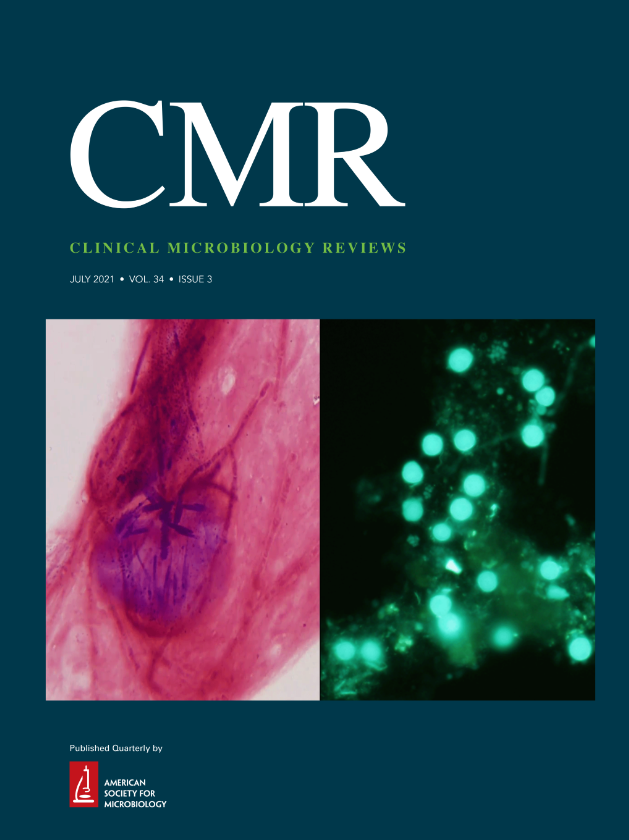肺炎链球菌β-内酰胺耐药性:大流行后时代的流行病学趋势、分子驱动因素和创新控制策略
IF 19.3
1区 医学
Q1 MICROBIOLOGY
引用次数: 0
摘要
肺炎链球菌(S. pneumoniae)是一种主要的人类病原体,可引起脑膜炎和菌血症等严重疾病。β-内酰胺类抗生素是治疗肺炎链球菌感染最重要的抗菌药物,但其耐药性已成为临床治疗的重大挑战。分析显示,在肺炎链球菌中β-内酰胺耐药的患病率存在显著的区域差异。肺炎球菌结合疫苗的使用有效地减少了高耐药克隆的传播,间接改善了耐药模式。有趣的是,耐药性与细菌侵入性呈负相关,表明相互选择压力。此外,COVID-19大流行可能通过改变宿主免疫状态和医疗资源分配影响了肺炎链球菌耐药性的演变。免疫功能低下的患者面临侵袭性肺炎球菌疾病的更高风险,这推动了抗菌素使用的增加,从而加剧了耐药性的上升。除了单分子机制外,抗性基因的获取顺序对抗性的成功进化起着至关重要的作用。分析耐药进化的动态原理和关键节点可以为制定精确的抗菌治疗策略提供新的见解。目前的研究重点是开发新型抗生素、抗菌肽、溶酶素和其他创新治疗剂。人工智能在抗菌药物筛选和耐药机制预测方面显示出巨大的潜力。本文综述了肺炎链球菌β-内酰胺耐药的流行病学、分子机制和管理方面的最新进展,旨在为基于证据的抗菌药物管理提供信息,并加快创新疗法的开发,以应对这一不断演变的公共卫生威胁。本文章由计算机程序翻译,如有差异,请以英文原文为准。
Streptococcus pneumoniae β-lactam resistance: epidemiological trends, molecular drivers, and innovative control strategies in the post-pandemic era.
SUMMARYStreptococcus pneumoniae (S. pneumoniae) is a major human pathogen that can cause severe diseases such as meningitis and bacteremia. β-lactam antibiotics are the most essential antimicrobial agents for treating S. pneumoniae infections, but the resistance has become a significant challenge in clinical therapy. Analyses reveal notable regional disparities in the prevalence of β-lactam resistance in S. pneumoniae. The use of pneumococcal conjugate vaccines effectively reduces the spread of highly resistant clones, indirectly improving resistance patterns. Interestingly, resistance is inversely correlated with bacterial invasiveness, suggesting mutual selective pressures. Additionally, the COVID-19 pandemic may have influenced the evolution of S. pneumoniae resistance by altering host immune states and healthcare resource allocation. Immunocompromised patients face a higher risk of invasive pneumococcal disease, driving increased antimicrobial use that fuels the rise of resistance. Beyond the single-molecular mechanism, the resistance gene acquisition order plays a critical role in the successful resistance evolution. Analyzing the dynamic principles and key nodes involved in the evolution of drug resistance could offer novel insights for developing precise antibacterial treatment strategies. Current research efforts focus on the development of novel antibiotics, antimicrobial peptides, lysins, and other innovative therapeutic agents. Artificial intelligence shows immense potential in the screening of antimicrobial drugs and the prediction of resistance mechanisms. This review synthesizes recent advances in the epidemiology, molecular mechanisms, and management of β-lactam resistance in S. pneumoniae, with the aim of informing evidence-based antimicrobial stewardship and accelerating the development of innovative therapeutics to combat this evolving public health threat.
求助全文
通过发布文献求助,成功后即可免费获取论文全文。
去求助
来源期刊

Clinical Microbiology Reviews
医学-微生物学
CiteScore
54.20
自引率
0.50%
发文量
38
期刊介绍:
Clinical Microbiology Reviews (CMR) is a journal that primarily focuses on clinical microbiology and immunology.It aims to provide readers with up-to-date information on the latest developments in these fields.CMR also presents the current state of knowledge in clinical microbiology and immunology.Additionally, the journal offers balanced and thought-provoking perspectives on controversial issues in these areas.
 求助内容:
求助内容: 应助结果提醒方式:
应助结果提醒方式:


